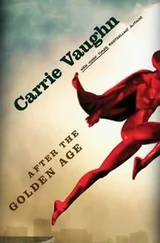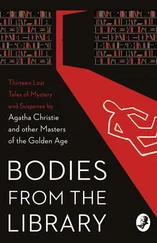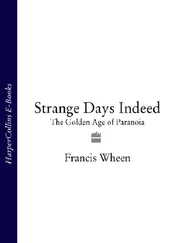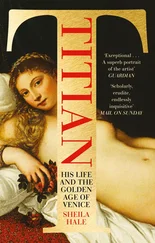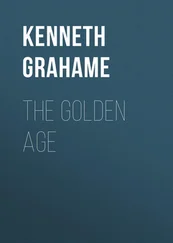Michal Ajvaz - The Golden Age
Здесь есть возможность читать онлайн «Michal Ajvaz - The Golden Age» весь текст электронной книги совершенно бесплатно (целиком полную версию без сокращений). В некоторых случаях можно слушать аудио, скачать через торрент в формате fb2 и присутствует краткое содержание. Год выпуска: 2010, Издательство: Dalkey Archive Press, Жанр: Современная проза, на английском языке. Описание произведения, (предисловие) а так же отзывы посетителей доступны на портале библиотеки ЛибКат.
- Название:The Golden Age
- Автор:
- Издательство:Dalkey Archive Press
- Жанр:
- Год:2010
- ISBN:нет данных
- Рейтинг книги:4 / 5. Голосов: 1
-
Избранное:Добавить в избранное
- Отзывы:
-
Ваша оценка:
- 80
- 1
- 2
- 3
- 4
- 5
The Golden Age: краткое содержание, описание и аннотация
Предлагаем к чтению аннотацию, описание, краткое содержание или предисловие (зависит от того, что написал сам автор книги «The Golden Age»). Если вы не нашли необходимую информацию о книге — напишите в комментариях, мы постараемся отыскать её.
is Michal Ajvaz’s greatest and most ambitious work.
The Golden Age
The Golden Age — читать онлайн бесплатно полную книгу (весь текст) целиком
Ниже представлен текст книги, разбитый по страницам. Система сохранения места последней прочитанной страницы, позволяет с удобством читать онлайн бесплатно книгу «The Golden Age», без необходимости каждый раз заново искать на чём Вы остановились. Поставьте закладку, и сможете в любой момент перейти на страницу, на которой закончили чтение.
Интервал:
Закладка:
The shell of the new wing is complete when Taal sails off to the island kingdom of Kass for a meeting about a protracted dispute over territory, which has again flared up in the form of skirmishes in ports and short exchanges of fire between ships in the straits that separate the two islands. At the castle of Kass’s ruling prince, Taal is enraptured by the magnificent statues placed along the walls of all corridors at regular intervals. The prince tells him that all the statues are the work of one person, Kass’s court sculptor. On hearing this information, Taal promises without hesitation to withdraw his military forces from all the disputed islets in the straits the very next day and to guarantee the safe passage of Kassian ships, on condition that the prince lends him the services of his court sculptor for two years. The prince is happy to consent to this, though he tells Taal that he is perhaps in for a surprise.
Two weeks later a ship arrives at the port on Devel. Taal is surprised indeed: once the labourers have carried out all the cases of tools and piled these up on the jetty, a lightly-built young woman steps ashore. Her name is Mii, and it was she who carved the statues of the Kassian court. The commission to decorate Fo’s palace has aroused in her a great enthusiasm. Mii is not capable of making one statue only; whenever she is working on a statue she feels the need to create a whole universe of which this statue is but a part. Mii’s manner of working is as follows: first of all she walks around the palace or park in which her statues are to stand, listening to the sounds of individual spaces until she gains an understanding of their pulsation and energy, the ebbs and flows of the forces within them, and it is out of this that shapes begin to crystallize. It is as though the spaces tell her of their anxieties, dreams and myths, of their gods and demons, of the mysterious beasts that inhabit them, of the dramas they stage, of the hell that glows in their corners, of the paradise whose music sounds behind their walls, of the sea whose tide washes up to them, of the galleries of dreams that are anchored at their most distant point.
Mii always stipulates that she herself should choose the places where the statues are to stand. For many people, her choices are beyond comprehension. A statue might stand in a hall aglow with the radiant light of chandeliers or in the darkest, dustiest corner, on an ostentatious portal or in a concealed alcove that is difficult to find, in a room in which the statue controls the space imperiously or high on a facade where its features are impossible to make out, perhaps even in an attic where no one ever has cause to go or in a cellar where the light never penetrates. It has happened that a client of Mii’s finds to his wonder, years after she completed the commission, a statue hidden in the dense brush by the park wall or beneath the murky surface of a pond.
As the figures take shape, so too do they acquire life stories: new worlds are born with their own histories, their own gods and mythologies, their own mores and laws. Mii knows the intricate mycelia of relations and events that are expressed in the gestures of the statues, surge into the points of daggers held over the breasts of enemies and the tips of fingers reaching out for conciliation; she knows the thousands of images and stories of the world of statues that have never achieved expression yet pulsate in stiff gestures of the body. But she has never felt the need to tell anyone about this world, nor herself to portray it in any way; it is enough for her that it radiates from the point of a dagger or the fingers of an outstretched hand.
Mii always works day and night, practically without a break. Whenever she finishes the creation of one of her worlds she feels immense fatigue; she sleeps for several days, and for weeks after this does not get up from her bed. In this time the universe she has created becomes dimmer and dimmer in her mind until it is gone. So clear is Mii’s mind now that when she receives a new commission and is walking around a house unknown to her, she does so with an empty consciousness, listening to the new whispers of unknown spaces, which introduce her to the rhythms of a nascent world.
When Taal shows Mii the sketches that express his ideas about how the statues of the palace should look, the sculptress does not so much as look at them. She asks him to take her to Fo’s wing, and for one whole month she does nothing but walk the empty corridors, halls and staircases. Out of the veins of the marble panelling and the rippling of the curtains, the gloom of the corridors and the brilliant light of the halls, there gradually arise the shapes of new gods, demons and heroes, the figures of humans, animals and monsters; the staircase transforms into cascades of water, giving life to nymphs and river deities; in the corridor an army of phantoms appears that mounts an expedition against the world of the humans. To begin with, Mii has blocks of marble set down in places she determines; then she gets to work on many statues simultaneously. Taal looks on with awe as she runs from the mouth of a statue by the wall of the balcony to the scales of a Triton in the fountain.
The pocket attached to this passage in the Book contained a detailed catalogue of all the statuary Mii created in Fo’s palace. I would quite like to have read this, but it was so badly smudged as to be practically illegible. I imagined someone folding out his part of the text and then walking with it through a wall of water; or perhaps these pages had been caught by a higher wave down by the sea. It was with a sense of sorrow that I looked at the white pages and the smudges of ink that had run. It came to me that here was a place where the forms of the statues returned to the realms of the shapeless currents out of which once they had crystallized.
Fo goes to take a look at the birth of a new world, just as Hios will do four years later. To begin with, Mii is unconcerned by his presence: in any case she hardly ever notices creatures that do not belong in the world she is creating. So Fo watches the origination of unknown creatures that will share his palace with him. His admiration for Mii soon develops into love. But at this time Mii lives in the world inhabited by her statues; for her figures she knows an incestuous love, in which she is the mother. For Mii, Fo is an incomprehensible and ever less welcome apparition, coming from another world.
We do not know if Mii could have fallen in love with Fo had the prince waited to declare his feelings for her until she finished her work at the palace, until she began to forget the faces and fates of her lovers in a disappearing world and to return to the world of men. But like all others of his family, Fo is of an impatient, excitable nature. When he realizes that Mii is taking absolutely no notice of him, when he sees that the only answer she has to give to his declaration is silence and that the only feeling she shows in his presence is resentment that someone is disturbing her work, he quits the palace and wanders about the island, sleeping in caves, under trees in the woods or on the sandy shore.
A cabin in the woods
The part of the Book that described the wanderings of the unhappy Prince Fo was extremely long, although it included hardly anything that had a particular bearing on the main story-line. The author gave a long-winded description of Fo’s encounters with country-dwellers who fail to recognize the wayfaring stranger who speaks with them. I read details of the country Fo passes through. The Book acknowledged Fo’s entering new districts with pockets in which the author wrote at length about the flora and fauna of the new territories or told a variety of boring or interesting tales from the locality. But the islanders made no distinction between the main story-line and its adjuncts; once when I was speaking with Karael about the unexpected digressions the islanders were always willing to give in to, she came out with something like an aphorism. “The main thing,” she said, “is that which is incidental.” (Another of her aphorisms was: “If you wish to encounter something that is exactly the same, go somewhere completely different.”) For a long time I found these labyrinthine insertions and diversions quite intolerable, but as you now know, dear reader, in the course of time I learned to appreciate the charms of nonsensical encounters on minor routes and confused returns to a world my absence had made strange to me. In these encounters our most intimate and important life goals suddenly become diversions that lead us away from a path that is unknown, monstrous and endlessly alluring, a path that is spun from materials we have always known to be diversional but at whose end there shines the highest, most blissful Goal, the correction of everything that has ever bothered or distracted us.
Читать дальшеИнтервал:
Закладка:
Похожие книги на «The Golden Age»
Представляем Вашему вниманию похожие книги на «The Golden Age» списком для выбора. Мы отобрали схожую по названию и смыслу литературу в надежде предоставить читателям больше вариантов отыскать новые, интересные, ещё непрочитанные произведения.
Обсуждение, отзывы о книге «The Golden Age» и просто собственные мнения читателей. Оставьте ваши комментарии, напишите, что Вы думаете о произведении, его смысле или главных героях. Укажите что конкретно понравилось, а что нет, и почему Вы так считаете.




